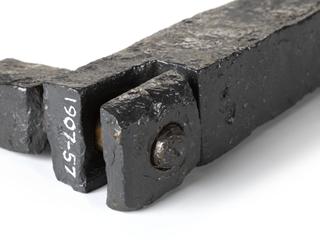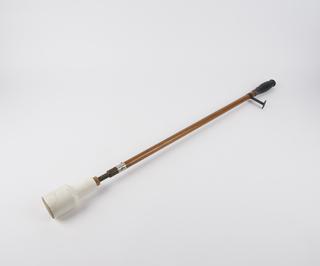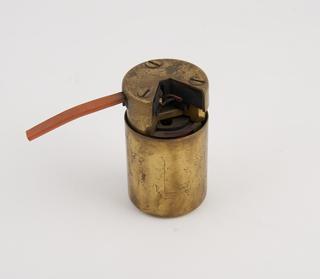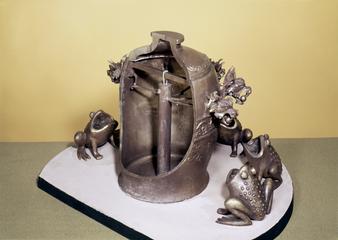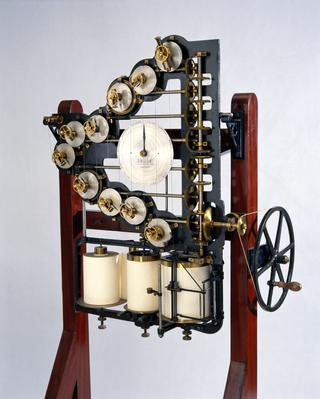
Double-boom seismograph designed by John Milne, 1908
Double-boom horizontal pendulum seismograph, designed by John Milne and made by R. W. Munro, 105-149 Cornwall Rd, South Tottenham, London, 1908. A plate on the instrument case carries the inscription: Prof. John Milne’s. F.R.S. Unfelt Earth Movement Recorder No. 52. It operated at Eskdalemuir Observatory between 1908 and 1915.
This instrument was designed by British geologist, mining engineer and seismologist John Milne (1850-1913) and detected the faint earth movements caused by distant earthquakes. Featuring two horizontal pendulums arranged at right angles, both the east-west and north-south components of earthquake waves could be recorded. The long booms ran parallel so that both traces could be inscribed on the same recording drum; photographic recording was adopted to minimise the effect of friction.
The British Association for the Advancement of Science adopted Milne's seismographs for the seismological network they administered from 1896. Instruments - all made by R. W. Munro - were despatched around the world and the records they generated were sent back to Milne’s personal observatory at Shide on the Isle of Wight. The network was an early example of worldwide earthquake monitoring, which has become a central feature of modern seismology.
Details
- Category:
- Geophysics
- Object Number:
- 1928-281
- Materials:
- mahogany (wood), brass (copper, zinc alloy), box (wood), mirror-glass (silvered) and glass
- type:
- seismograph
- credit:
- Meteorological Office
